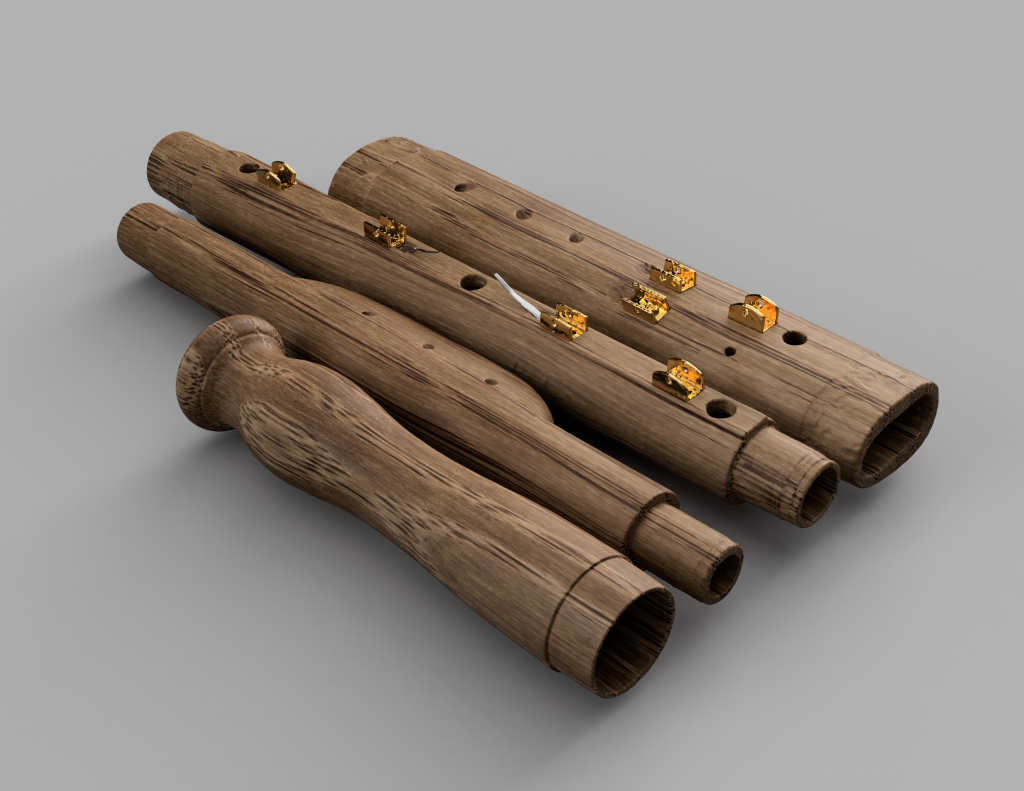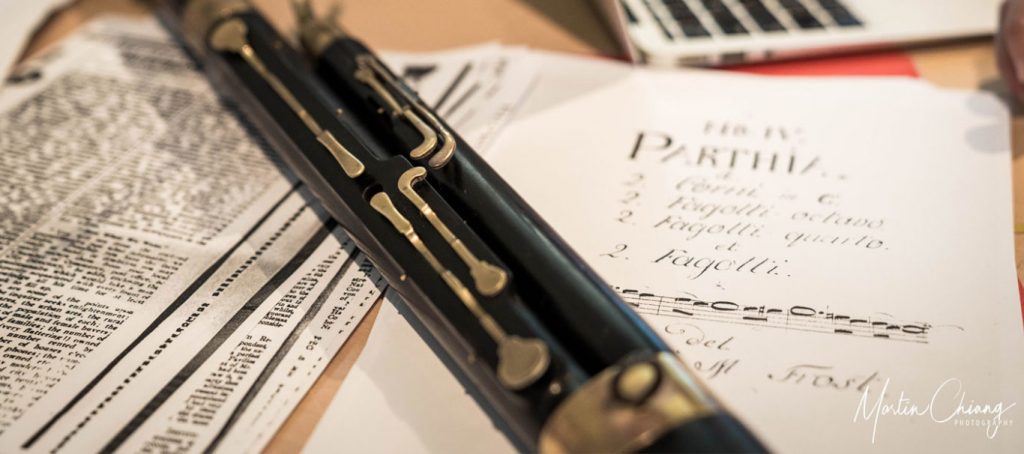
Neue alte Klangkörper / 3D-Fagottini
Ein multi-methodischer Ansatz zum Nachbau von zwei Oktavfagotten aus dem 18. Jahrhundert unter Verwendung der 3D-CT- und 3D Print-Technologie
A multi-method approach to reconstructing two original eighteenth-century fagottini with 3D-CT modelling
Hosted at the Schola Cantorum Basiliensis / Hochschule für Musik/ University of Applied Sciences and Arts Northwestern Switzerland from 01.02.– 30.07.2020
Das Projekt wurde ermöglicht durch Unterstützung der Jubiläumsstiftung der Mobiliar Genossenschaft, die Ernst Goehner Stiftung, und die FHNW.
This project was made possible by the support of the Jubileäumstiftung der Mobiliar Genossenschaft, the Ernst Goehner Stiftung, and the FHNW.

Image by cultural heritage
The first systematic study on small-sized bassoons (“fagottini” and “tenoroons”) presented on the historical bassoon website discovered a significantly large number of surviving small-sized bassoons in instrument museums and collections, leading to research the missing musical history and relevance of these eighteenth- and nineteenth-century instruments and redefining our perceptions about musical pedagogy and performance.
[NOTE: Please view our current SNF project, “Out of the bass register”, which continues research and trials where this experimental phase ended: https://www.historical-bassoon.ch ]
In general, it is strictly forbidden to play original wind instruments in museums and collections due to conservation reasons and copies of small-size historical bassoons are not readily, if at all, available. Reconstructions are therefore mandatory before any further empirical, practical research can be undertaken. This project offers an innovative multi-method approach to researching woodwind instrument reconstructions, using modern 3D-printing technology to produce models of the most complex woodwind family, the bassoon.
Three-dimensional x-ray computed tomography (3D-CT) is a valuable tool being used to gather data about various musical instruments or their parts. 3D-CT can deliver measurement details and data about an antique wind instrument in its current state, with possible inner-bore distortions caused by usage and climatic conditions over centuries. Until now, historical woodwind instrument makers have used tactile measuring methods, collecting major/minor axis measurements of bore diameters and calculating round inner-bores for contemporary wooden reconstructions, where regular diameters are required. Irregularities and distortions in the instrument’s inner bore caused by shrinkage or warping can hardly be reproduced, nor has that been a maker’s objective. It has not yet been possible to practically compare these methods, as no copies of historical small-size bassoons are being produced, either in the conventional manner or with 3D technologies. This project enables an investigative and practical comparison of the contrasting concepts mentioned above, using 3D-CT and 3D technologies that have not yet been applied to woodwind instruments.
Methods
For the purpose of this research project, we had access to two original eighteenth-century small-size bassoons, both preserved in their original states and in playable condition. A four-key fagottino from Scherer (Butzbach, ca. 1760–70) located in the Museum für Musikinstrumente der Universität Leipzig, and a four-key anonymous fagottino (ca. 1750–90) located in the private Swiss collection belonging to Pius Bessire. Both instruments were scanned according to protocol established by MUSICES in 2018.
Two 3D-models of each original fagottino were created:
- Model I: Based on data derived from 3D-CT scans, 1: 1, “as is” condition, including any eventual distortions of the inner bore;
- Model II: Based on concepts used by historical woodwind instrument makers, with calculated round inner-bore dimensions, transferred into CAD models for 3D printing.
Original keywork was also scanned and printed in brass. Bocal designs were based on measurements from existing historical bocals and reconstructed. As no original double reeds exist, these were designed and constructed in line with historical reed-making principles by the research team, who have expertise in the field.
The 3D-models were evaluated using an empirical research approach, systemically measuring defined parameters such as pitch, intonation, tone quality, ease of handling and response. Specific differences between models derived from the 3D-CT scans and calculated round bores were noted and compared. Additionally, comparisons with original instruments is foreseen.
Objectives and future perspectives
The empirical study of two methods of instrument measurement collection and design provide the foundation for future reconstructions of historical small-size bassoons necessary for further investigations in historical pedagogy and performance. 3D-CT technology used can be applied to reconstructions of other historical woodwind instruments, both 3D-printed and traditionally-constructed models. Please see the following SNF three-year study “Out of the bass register” about small-size bassoons.



